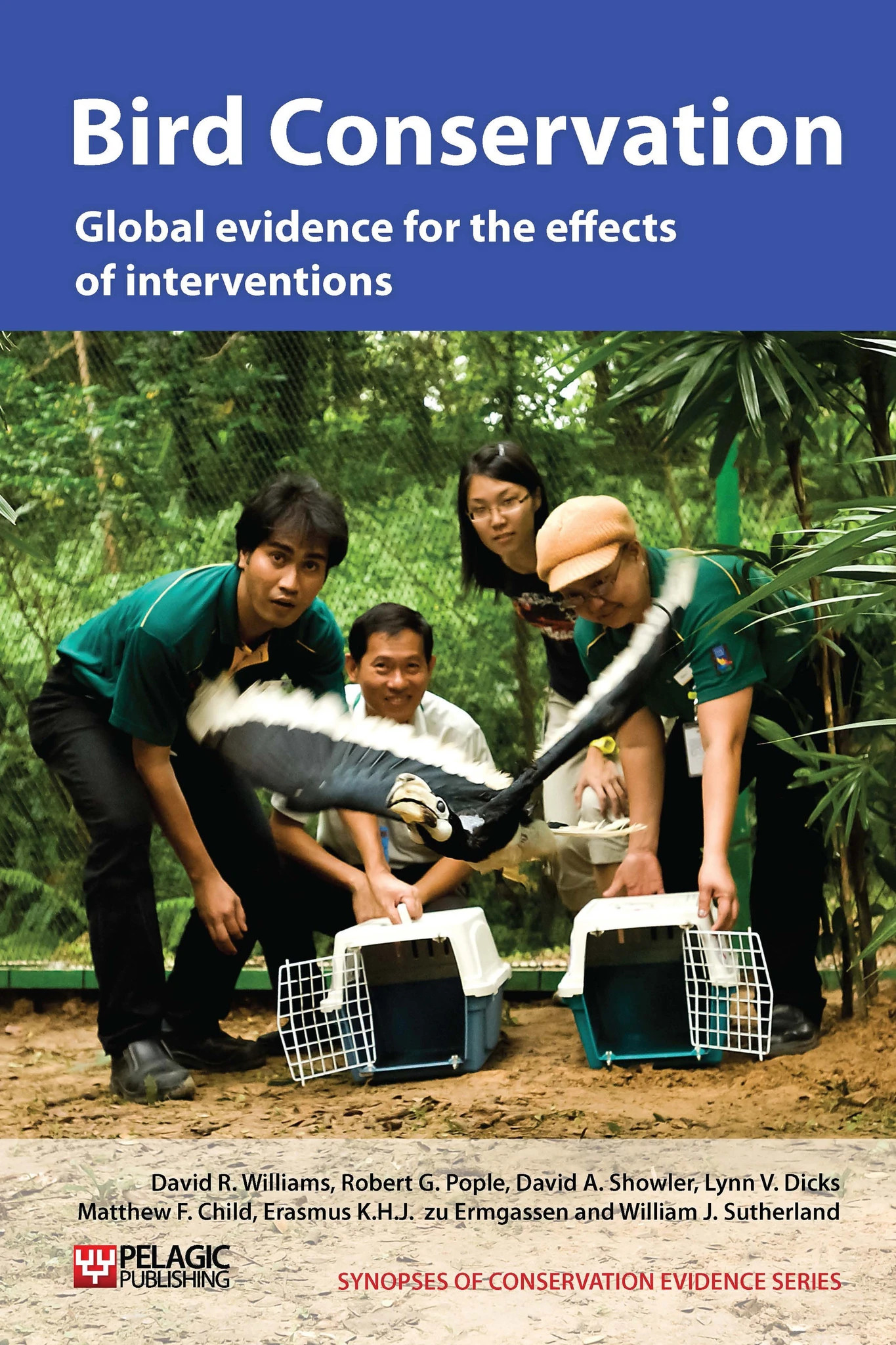Clip birds’ wings on release
-
Overall effectiveness category Unknown effectiveness (limited evidence)
-
Number of studies: 4
View assessment score
Hide assessment score
How is the evidence assessed?
-
Effectiveness
10% -
Certainty
30% -
Harms
5%
Study locations
Supporting evidence from individual studies
A review of a houbara bustard Chlamydotis undulata macqueenii release programme in southwest Saudi Arabia between 1991 and 1993 (Jaime et al. 1996) found that three to five month sub-adult birds released in a large (4 km2) fenced enclosure (designed to reduce predation by mammalian predators) with clipped wings had significantly lower survival (2 of 13 birds surviving to join wild birds), compared to two month-old birds released with unclipped wings (one of 25 birds released survived for at least seven months, ten other established territories in the release site). Six of the wing-clipped birds were killed by avian predators within the enclosure, one died of pox and three were killed by mammalian predators after they left the enclosure. Twelve of the unclipped birds were also predated. Other release techniques and descriptions of the captive-breeding programme are discussed in ‘Use captive breeding to increase or maintain populations’, ‘Use artificial insemination in captive breeding’, ‘Release captive-bred individuals’, ‘Release birds in ‘coveys’ and ‘Use holding pens at site of release’.
Study and other actions testedA 1997 review of the Hawaiian goose (nene) Branta sandvicensis reintroduction programme (Black et al. 1997) concluded that birds released into temporary exclosures with their wings clipped survived less well than those released into the wild before fledging. This study is discussed in more detail in ‘Release captive-bred individuals into the wild to restore or augment wild populations’.
Study and other actions testedA before-and-after study from the Aleutian Islands, Alaska, USA on the cackling goose Branta hutchinsii recovery programme (USFWS 2001) found that releasing wing-clipped or moulting wild adult geese proved a better strategy than releasing young geese (captive or wild, see ‘Release birds as adults or sub-adults, not juveniles’). The authors note that the release of captive-bred geese was not very successful overall. This study also investigates the effect of Arctic fox Alopex lugopus control on breeding islands (see ‘Predator control on islands’).
Study and other actions testedA 2007 review of northern bald ibis (waldrapp) Geronticus eremita conservation in Israel (Bowden et al. 2007) found no differences in survival between 16 birds released with clipped wings and 40 birds released without clipping. All 56 birds released became emaciated and disorientated and formed poor social bonds. This study is also discussed in ‘Release captive-bred individuals into the wild to restore or augment wild populations’, ‘Use captive breeding to increase or maintain populations’, ‘Artificially incubate and hand-rear birds in captivity’, ‘Use holding pens at release sites, ‘Release birds as adults or sub-adults, not juveniles’, ‘Use microlites to help birds migrate’ and ‘Foster birds with non-conspecifics’.
Study and other actions tested
Where has this evidence come from?
List of journals searched by synopsis
All the journals searched for all synopses
This Action forms part of the Action Synopsis:
Bird Conservation
Bird Conservation - Published 2013
Bird Synopsis





)_2023.JPG)














